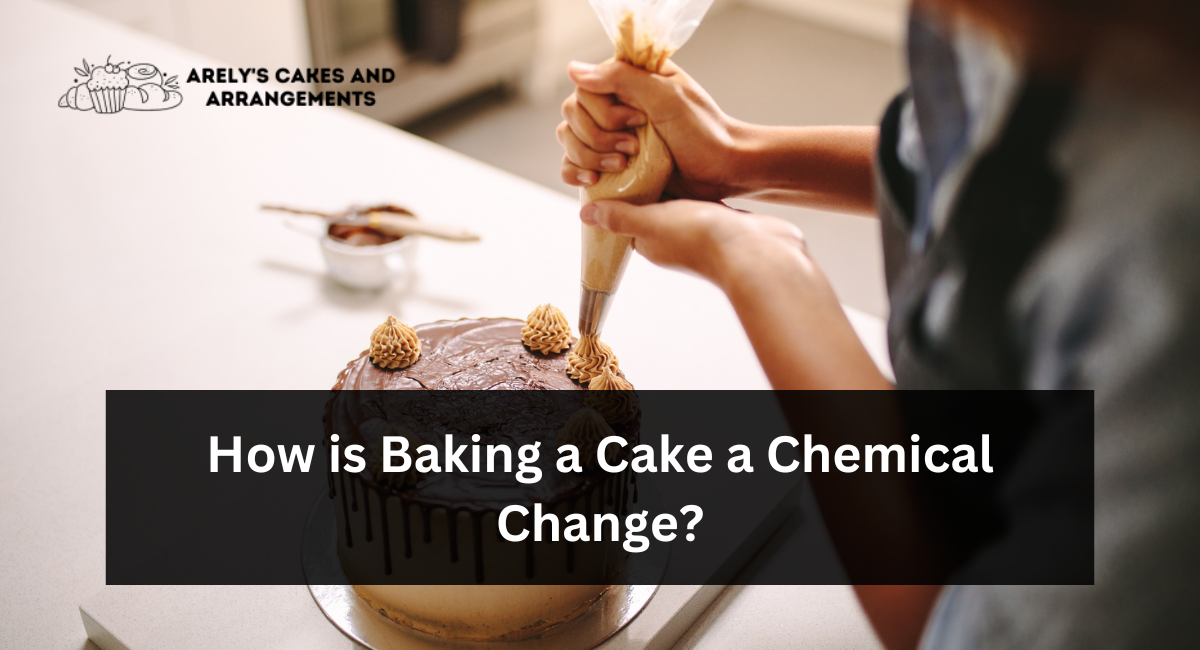Baking a cake might appear simple at first glance, but numerous chemical changes turn individual ingredients into one cohesive dessert. Some examples of these reactions include:
The heat from the oven causes baking soda to release bubbles of carbon dioxide that become trapped within the batter, creating its light and fluffy texture.
Furthermore, this heat also causes Maillard reactions between sugar and the proteins found in eggs – producing delicious results!
Smell
As you bake a cake, numerous chemical reactions contribute to its success. Baking powder combines with water and heat to release carbon dioxide gas, which causes the batter to rise, while egg proteins change and help set up the batter’s structure.
Finally, oil keeps everything moist, keeping your batter from drying out during baking. Furthermore, heat drives off water that accumulates within it, which results in less doughy cakes.
Chemical changes occur when the atoms and molecules in two or more substances are rearranged to form an entirely different material than their originals.
This is evident when leaves change color in autumn, mayonnaise spoils, or fireworks explode. While physical changes only involve changing shape temporarily, chemical transformations cannot be reversed – they’re irreversible!
Baking cakes require multiple chemical reactions that produce delicious pastries. When starches combine with sugar, they become gelatinized, giving the batter structure.
Proteins in eggs react with reducing sugars and heat to form crisp brown compounds called Maillard reactions that give baked goods their golden hue and rich flavor.
Finally, when water evaporates at high temperatures, it turns into steam, creating steamy treats!
Heat
As the ingredients undergo a chemical transformation when baking a cake, they undergo irreversible chemical changes that change them into something different from their original forms – no turning back time to produce raw cake is possible!
Baking’s most essential step occurs when sugar reacts with baking powder to produce bubbles of gas that help the batter rise, giving cakes their characteristic light, airy texture.
These gas bubbles get trapped by stretchy gluten from flour and protein from eggs, allowing your cake to stay aloft instead of sinking!
Before placing your cake into the oven, it is vitally important that it is thoroughly mixed so air bubbles can form.
This process, known as “creaming,” creates the delicate, melt-in-your-mouth texture of cakes made with creamed mixtures. Butter provides fat that helps trap air bubbles in thin layers around them while heating in the oven and prevents them from popping open when too much heat hits them.
Eggs play an integral part in the creaming process for another reason – their proteins form thin layers around fat-coated air bubbles when you beat, providing rigid walls against burst.
This also prevents your cake from becoming dense and heavy – it gives it that airy, fluffy consistency we all know and love!
Gas
Your freshly baked cake looks very different from its raw batter counterpart due to several chemical reactions involving ingredients that come together into a delicious baked product.
For example, when baking powder and soda react with acid in cake batter, they release bubbles of carbon dioxide gas that get trapped within the dough to help it rise.
Because this chemical reaction produces new substances that cannot be reversed, baking a cake should be considered an act of chemical transformation that cannot be undone.
Heat exposure causes proteins in the cake to denature and coagulate, solidifying into that light and airy texture we all love so much about cakes.
Starch is also subject to gelatinization – this process allows it to absorb moisture from its environment and expand, thickening it further and giving structure to the final product.
Chemical changes differ significantly from physical ones in that their former only change the physical form of an object or substance without altering its chemical identity. Baking a cake involves rearranging molecules into something entirely new.
Irreversible Change
Baking a cake constitutes chemical change when its ingredients cannot be changed back into their original states; this phenomenon is known as irreversibility and includes burning, rusting, and gas production.
Baking a cake requires many complex chemical reactions that only occur when ingredients are exposed to heat, changing their properties irrevocably at the molecular level and altering atomic bonds of molecules.
Once a cake has been baked, its ingredients combine to form something unique and unexpected. What once consisted of flour, butter, eggs, sugar, and other flavors may now be impossible to deconstruct back into their parts.
Once heated, these elements combine to produce a delicious, spongy, and solid treat with different qualities than its initial ingredients, such as color, texture, and scent.
Though understanding the science of baking a cake may not be necessary, doing so can help cooks and bakers achieve better results and create original recipes.
Knowing how a cake is created may also help prevent costly errors from ruining its taste or appearance.
Conclusion:
In the oven’s alchemy, baking a cake transcends the realm of mere culinary craftsmanship—it’s a fascinating chemical change.
The amalgamation of ingredients, the rise of the batter, and the transformation of flavors illustrate the magic that occurs when heat meets the art of baking.
So, next time you embark on a baking adventure, savor the scientific symphony that turns simple ingredients into a delectable masterpiece.
